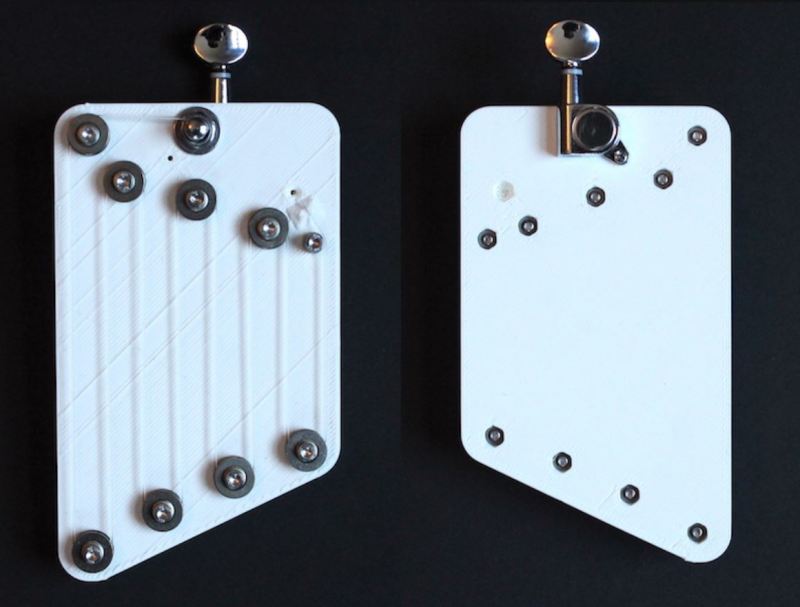To exclude musical instruments in the overflowing library of possibility that 3D printing enables would be a disservice to makers and musicians everywhere. For the minds over at [Makefast Workshop], an experimental idea took shape: a single stringed harp.
The TuneFast Harp needed enough notes for a full octave, robust enough to handle the tension of the string, a single tuning mechanism and small enough to print. But how to produce multiple notes on a harp out of only one string? V-grooved bearings to the rescue! The string zig-zags around the bearings acting as endpoints that rotate as its tuned, while the rigid PLA printing filament resists deforming under tension.
After a bit of math and numerous iterations — ranging from complete reconfigurations of part placements to versions using sliding pick mechanisms using magnets! — a melodic result!
Assembling the harp, the main points to note are ensuring the bearings rotate freely — otherwise, your tuning will be off — and giving each note’s section of string a quick check to ensure even tension. The TuneFast harp works with most standard guitar strings — though steel strings may cause the harp to deform further — and once tightened to a reasonable degree, it’s ready to play! Further fiddling will change the key, but that’s up to the maker-musician’s discretion. Paired with The Hovalin and a few others, you have the makings of the first 3D-printed orchestra.
















So I love 3D printing as much as the next guy..but when it’s just a block with some holes popped through it, is 3D printing really the appropriate construction method? Could this have just been a block cut from a 2×4?
Hello Dan,
I must agree, there is no real reason for using a 3D printer IF you are capable of using a drill(press) properly. But what If you don’t have a drill(press) or are unable to work accurately. Or what if you lack the tools and lack the skills?
Using the 3D printer simply means that all measurements can be done in the digital domain (no measurement errors (that can’t be fixed on a 2nd iteration), no slipping drill bits, no off center holes). So the 3D printer sort of guarantees that the execution is perfect on every print. Is the 3D printer the right tool for this job, nope… but if it is the only tool you have then it’s the perfect tool.
Regarding the project, I like the concept.
The deep grooves and non rigid bearings damp the string sustain to the point of xxxx. The plastic don’t help either. One note is really off. Still a transposing harp is unique. Bending notes, put a whammy bar on it?
How is this different from kantele? https://en.wikipedia.org/wiki/Kantele
Off the top of my head, it only has one string and sounds a lot worse.
I was just wondering because they call it a harp but to me it looks more like a kantele.
How do you tune individual notes?
Print a new one?
Maybe a channel instead of a hole and nut, to allow one to adjust the length of that note’s string? Per string tension is still not likely to be well adjustable that way though.